Working with Dr Nicolas Pilcher, a leading specialist on sea turtles and co-chair of the IUCN Marine Turtle Specialist Group, Scubazoo photographer and stock footage manager Gil Woolley, together with intern Richard Macnair, joined a small team of volunteers heading out to Mantanani to help initiate a Marine turtle conservation project.
The aim of the project is to investigate the impact of blast fishing on sea turtles. Using the data collected, it is hoped that a case can be built that will help justify to the State Cabinet that blast fishing should be eradicated. A move that would have huge benefits for not only sea turtles, but for all denizens of the reef and the communities across the state that depend on them for food.
The Turtle enclosure construction team comprised of Dr Pilcher and 4 dedicated volunteers, Gil and Richard from Scubazoo and Edrie and Ann – volunteers from local dive operator Borneo Dream. In addition to this, Camps International were on the island and happy to assist. Several campers and staff joined in with net construction and handling and most importantly Camps International took on the crucial job of catering for the hungry volunteer team!

The construction of the net itself took three days. After arriving on the island on the afternoon of Friday the 3rd of February, Nic met with Camps international and began a briefing of the job at hand for all members involved in the project. With so many eager helpers the first section of net construction was done on that same day, allowing the team to relax and enjoy the spectacular island paradise that surrounded them as the sun set.
As the construction of the net continued it presented its share of challenges, the first and foremost was the location of the net. Finding an area where tidal movements would not cause the net to either become fully submerged due to the weights: potentially leading to the turtle escaping, or bunching up when tide was low: creating folds in which the turtle may become trapped. Once a suitable location was found the team spent a long time in SCUBA gear, attaching sand anchors, screwing weights in, threading ropes and joining the net to its framework with cable ties above and below water.

Having finally completed the enclosure, a turtle was required! It would be fitted with a time-depth recorder and a 3-D accelerometer. These two devices along with a time stamped hydrophone that would be listening for blasts from fish bombing, would work in unison to give information about how the turtle is affected by the blast sound waves.
For the remainder of the trip the volunteers spent days chasing down, capturing and tagging turtles for Dr Pilcher, who would later perform laparoscopies for his research into marine turtle feeding grounds and population ratio’s in the wild.
The project is ongoing, and Scubazoo hopes to be there to help it along, Stay tuned for updates later in the year.
